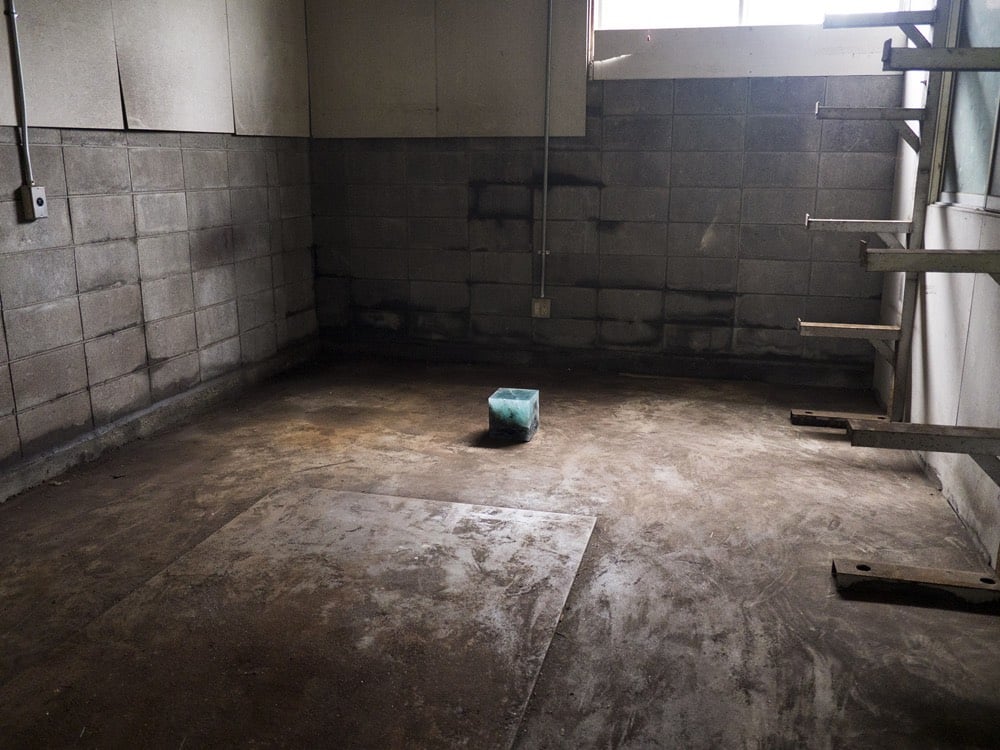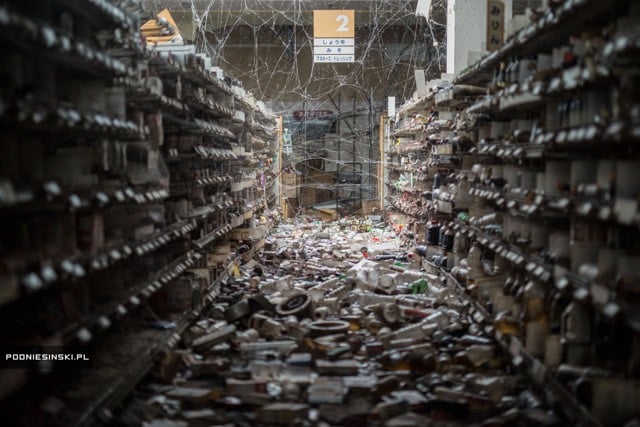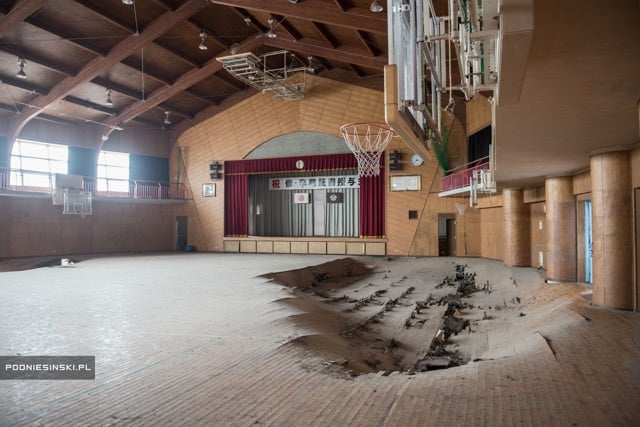

When the world’s first atomic weapon exploded in New Mexico in July 1945, the energy from the blast formed a new mineral called trinitite from the desert sand. For his 2015 Trinity Cube project, artist Trevor Paglen took irradiated glass gathered from the area around where the Fukushima Daiichi nuclear disaster occurred in 2011 and combined it with trinitite to form a blue cube. He then installed the cube in the Fukushima Exclusion Zone to continue to be irradiated.
The artwork will be viewable by the public when the Exclusion Zone opens again, anytime between 3 and 30,000 years from the present.

Photographer Arkadiusz Podniesiński recently took a trip to Japan to the area affected by the Fukushima Daiichi nuclear disaster. He toured towns closed due to high radiation levels, talked to former residents, and observed clean-up efforts in some of the less affected areas.
When entering the zone, the first thing that one notices is the huge scale of decontamination work. Twenty thousand workers are painstakingly cleaning every piece of soil. They are removing the top, most contaminated layer of soil and putting it into sacks, to be taken to one of several thousand dump sites. The sacks are everywhere. They are becoming a permanent part of the Fukushima landscape.
The contamination work does not stop at removal of contaminated soil. Towns and villages are being cleaned as well, methodically, street by street and house by house. The walls and roofs of all the buildings are sprayed and scrubbed. The scale of the undertaking and the speed of work have to be admired. One can see that the workers are keen for the cleaning of the houses to be completed and the residents to return as soon as possible.


(thx, james)
With the assistance of a nuclear reactor operator, Randall Munroe came up with this handy radiation dose infographic. Doses recorded near the Fukushima plant compare to those from a single mammogram or dental x-ray. A note on how to use this chart:
If you’re basing radiation safety procedures on an internet PNG image and things go wrong, you have no one to blame but yourself.
(via df)
I haven’t been keeping up with the Japan nuclear power plant situation as much as I want, but I wanted to pass along a few interesting articles. Over at Boing Boing, Maggie Koerth-Baker wrote a widely linked piece about how nuclear power plants work:
For the vast majority of people, nuclear power is a black box technology. Radioactive stuff goes in. Electricity (and nuclear waste) comes out. Somewhere in there, we’re aware that explosions and meltdowns can happen. Ninety-nine percent of the time, that set of information is enough to get by on. But, then, an emergency like this happens and, suddenly, keeping up-to-date on the news feels like you’ve walked in on the middle of a movie. Nobody pauses to catch you up on all the stuff you missed.
As I write this, it’s still not clear how bad, or how big, the problems at the Fukushima Daiichi power plant will be. I don’t know enough to speculate on that. I’m not sure anyone does. But I can give you a clearer picture of what’s inside the black box. That way, whatever happens at Fukushima, you’ll understand why it’s happening, and what it means.
MrReid, a physics teacher, writes about the situation at Fukushima:
Even with the release of steam, the pressure and temperature inside Unit 1 continued to increase. The high temperatures inside the reactor caused the protective zirconium cladding on the uranium fuel rods to react with steam inside the reactor to form zirconium oxide and hydrogen. This hydrogen leaked into the building that surrounded the reactor and ignited, damaging the surrounding building but without damaging the reactor vessel itself. Because the reactor vessel has not been compromised, the release of radiation should be minimal. It appears that a very similar situation has occurred at Unit 3 and that hydrogen is again responsible for the explosion seen there.
And this piece is a more meta take on the situation, What the Media Doesn’t Get About Meltdowns.
Of immediate concern is the prospect of a so-called “meltdown” at one or more of the Japanese reactors. But part of the problem in understanding the potential dangers is continued indiscriminate use, by experts and the media, of this inherently frightening term without explanation or perspective. There are varying degrees of melting or meltdown of the nuclear fuel rods in a given reactor; but there are also multiple safety systems, or containment barriers, in a given plant’s design that are intended to keep radioactive materials from escaping into the general environment in the event of a partial or complete meltdown of the reactor core. Finally, there are the steps taken by a plant’s operators to try to bring the nuclear emergency under control before these containment barriers are breached.










Stay Connected